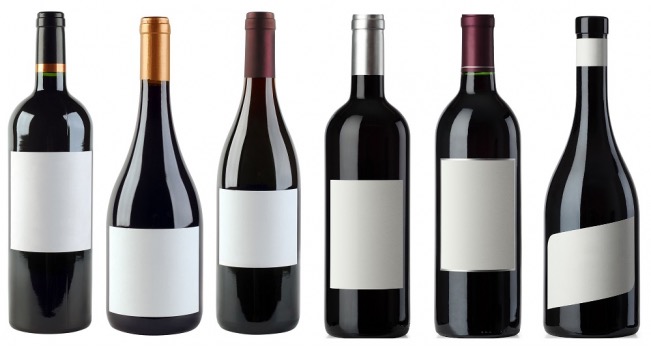 During my last visit to Chateau Troplong-Mondot, when Myriam Ruer showed me round, I was especially fascinated by the vaults where they keep some very old bottles. A passionate and very knowledgeable oenologue, it was a real pleasure to talk to her, particularly about a rarely mentioned subject, but one which raises so many questions. We discussed bottles: their influence on wine measures, their origins, their future…
During my last visit to Chateau Troplong-Mondot, when Myriam Ruer showed me round, I was especially fascinated by the vaults where they keep some very old bottles. A passionate and very knowledgeable oenologue, it was a real pleasure to talk to her, particularly about a rarely mentioned subject, but one which raises so many questions. We discussed bottles: their influence on wine measures, their origins, their future…
One important thing to remember when choosing a wine: “the bigger the bottle, the slower the ageing process” ! What’s more, the slower the ageing, the better the wine. From that we might perhaps reason that, for those who have the patience, it’s better to buy your wine in large containers. Of course, it’s not as simple as that because plenty of other factors come into play (the wine itself, the cork, how it’s kept…). Nevertheless, it’s a rare buyer who will choose such and such a container for oenological reasons. Practical criteria most often prevail. For instance, restaurants might well prefer 50cl bottles, or others still might go for Magnums for gala dos. Boxed wines, and those in other non-glass containers, are perfect examples of new trends. In fact, the bottle in its cylindrical form is not such a very old invention. It only really made its debut in the 18th Century as an aid to storage and conservation (so they could monitor wine-cork contact).
Mostly when we think of bottles it’s the 75cl ones. So why are they 75cl and not a litre like other bottled drinks? The answer is simple. It’s a tradition inherited from trading with the English. Because they were great appreciators of French wines, a convenient way of shipping the precious consignments had to be found. The carafes that had been previously used were too fragile, and because of their flat bottoms, to unstable. So bottles with a concave base were created so they’d be more stable.
 Furthermore, the French used the English liquid measure of gallons for Bordeaux wines at the time. Thus a Bordeaux barrel became 50 gallons, 225 litres, a round 300 bottles of 0.75 litres. At the same time, 2 gallons corresponded to 9 litres, so a case of 12 bottles of 0.75 litres ….perfect ! English influence didn’t extend so strongly everywhere else however because Rhine wine bottles contain 0.70 litres and those Arbois or Jura a mere 0.62 litres, for instance.
Furthermore, the French used the English liquid measure of gallons for Bordeaux wines at the time. Thus a Bordeaux barrel became 50 gallons, 225 litres, a round 300 bottles of 0.75 litres. At the same time, 2 gallons corresponded to 9 litres, so a case of 12 bottles of 0.75 litres ….perfect ! English influence didn’t extend so strongly everywhere else however because Rhine wine bottles contain 0.70 litres and those Arbois or Jura a mere 0.62 litres, for instance.
Finally, there were regional differences in denominations of wine bottle sizes, especially those of Bourgogne and Champagne. I thought it might be amusing to set out the different sizes below, many of them names going back to the dawn of time. No one quite knows why these great Biblical characters were chosen. Jeroboam (first king of part of Northern Israel); Methuselah (the oldest person in the Old Testament); Nebuchadnezzar (the greatest king of Babylon) and, again,two of the three wise kings.
There are superb flagons in the different Bordeaux chateaux, but the rarest of all must be Melchiors! But insofar as records are concerned the biggest bottle in the world at the moment is in Germany and dates from 2007. It contains Austrian sweet white wine, year 2005, and the measurements are like something out of Gulliver’s Travels. Of positively Brobdingnagian proportions in fact: at 2.40 metres in height, it contains no less than 480 litres! Brush up on your sizes with the chart below :
| Content | Bottles | Champagne | Bourgogne | Bordeaux |
|---|---|---|---|---|
| 0.375 | 1/2 | Demi | Demi | Demi |
| 0.5 | 2/3 | — | Chopine | Pot |
| 0.75 | 1 | Standard | Bottle | Bottle |
| 1.5 | 2 | Magnum | Magnum | Magnum |
| 2.25 | 3 | — | — | Marie Jeanne |
| 3 | 4 | Jeroboam | Jeroboam | Double Magnum |
| 4.5 | 6 | Rehoboam | Rehoboam | Jeroboam |
| 6 | 8 | Methuselah | Methuselah | Imperial |
| 9 | 12 | Salmanazar | Salmanazar | Salmanazar |
| 12 | 16 | Balthazar | Balthazar | Balthazar |
| 15 | 20 | Nabuchadnezzar | Nabuchadnezzar | Nabuchadnezzar |
| 18 | 24 | Solomon | Solomon | Melchior |
| 26.25 | 35 | Sovereign | — | — |
| 27 | 36 | Primat/Goliath | — | — |
| 30 | 40 | Melchizedek | — | — |
| 93 | 124 | Adelaïde | — | — |
| 150 | 200 | Sublime | — | — |

